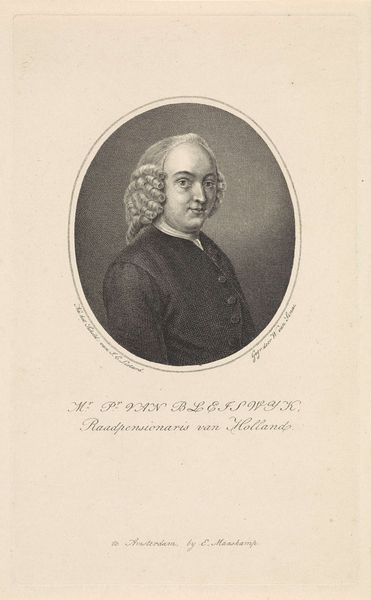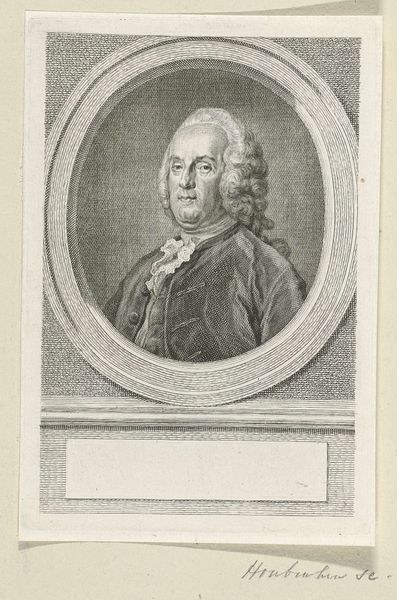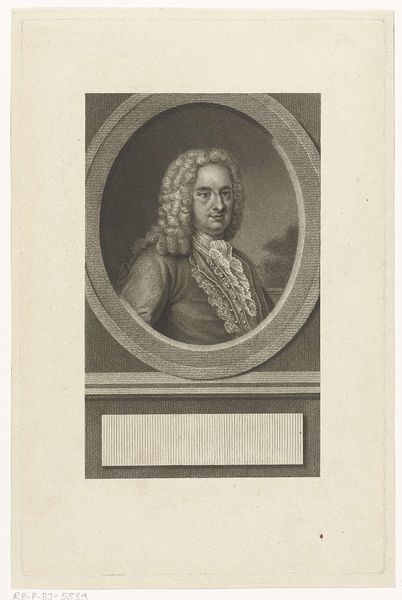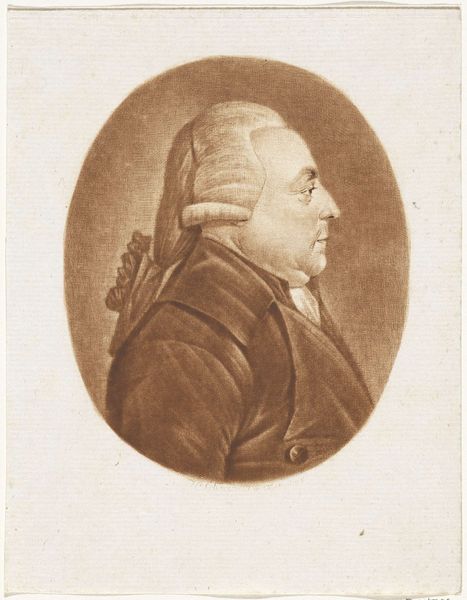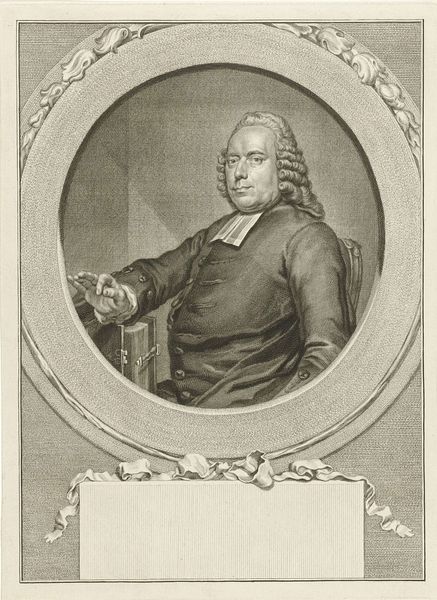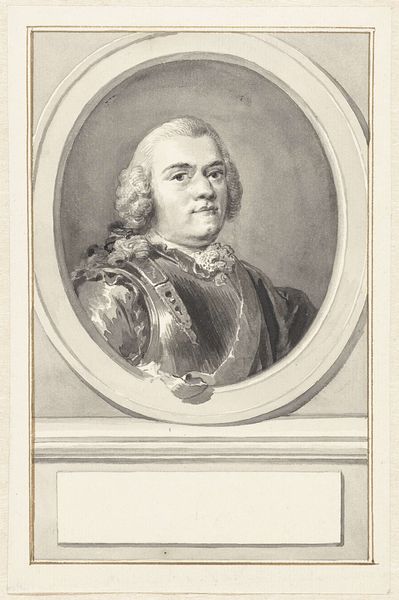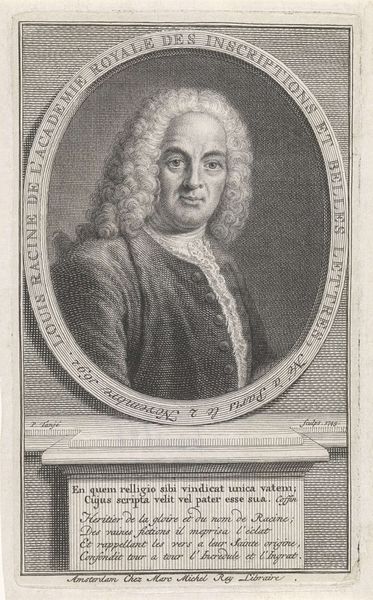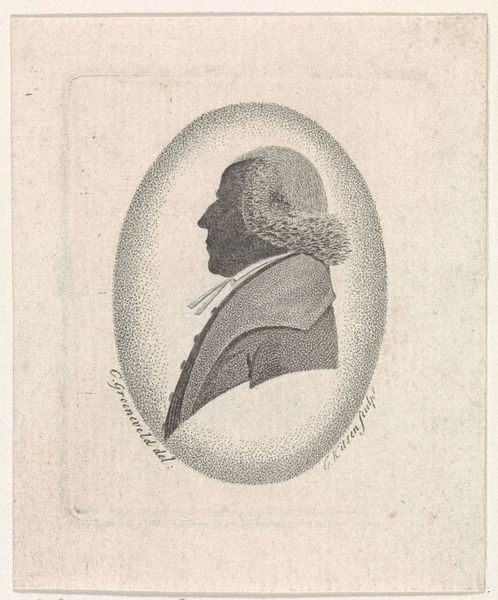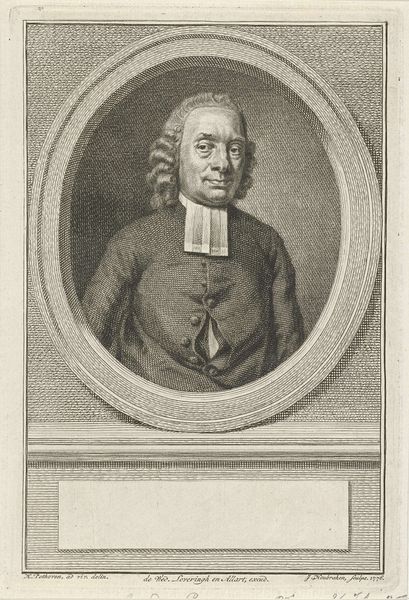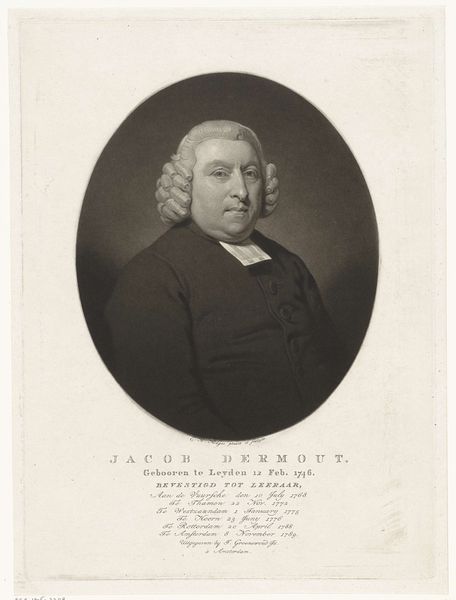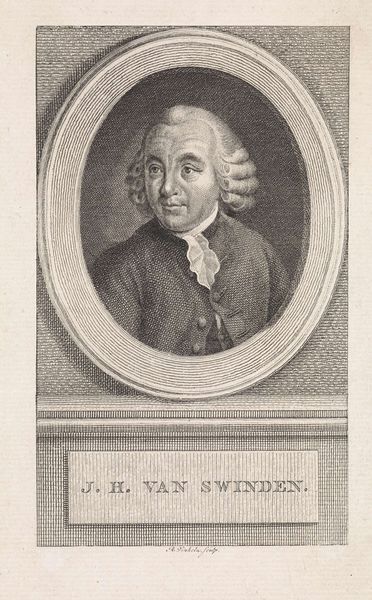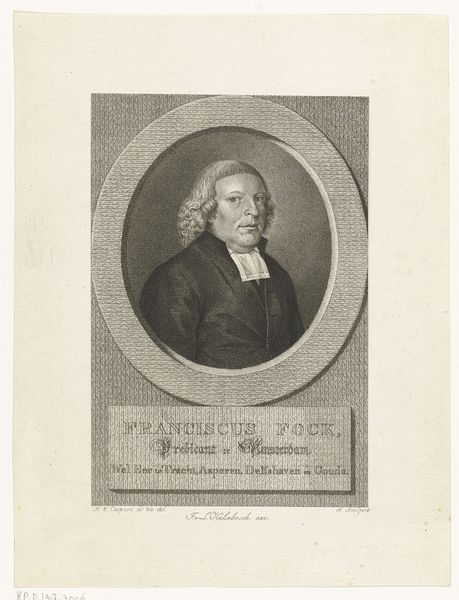
Dimensions: height 230 mm, width 150 mm
Copyright: Rijks Museum: Open Domain
Curator: Welcome to the Rijksmuseum. We are standing before a print, "Portret van Willem Gustaaf Frederik Bentinck van Rhoon." Created between 1822 and 1826, this engraving captures the likeness of a prominent figure of the time. Editor: My immediate impression is one of controlled formality. The monochrome palette and tight framing lend it a somber yet dignified air. Curator: Indeed. The engraving, likely reproduced for wide circulation, presents Willem Gustaaf Frederik Bentinck van Rhoon within a contained oval format, typical of portraiture of the period, a strategic choice by Willem van Senus that emphasizes structure. Look at the textures created by the line work in his wig, for instance, each line placed with deliberation to give texture to the hair, and weight to the composition. Editor: I'm struck by how this image functions as a piece of political propaganda, presenting its subject, a nobleman, with unquestioned authority. It omits so much - who did this "prominent figure" serve? Who did his power marginalize or oppress? Curator: I see your point. But let's consider how the artist uses the conventions of portraiture – the subject gazing directly at the viewer, the controlled lighting, the attention to detail in the clothing – to create a carefully constructed image. Each stroke on the copperplate, each hatch and crosshatch defines form and implies light and shadow with extraordinary fidelity. Editor: It's also a visual representation of privilege and power, isn't it? I am interested in who has access to these images, then and now. How did prints like these reinforce societal hierarchies? I cannot disassociate this work from the societal framework. Curator: An interesting consideration. For me, this work of Van Senus shows a mastery of light and form; I find that its effectiveness as propaganda emerges organically from its formal success. Editor: Perhaps. Still, these details carry specific connotations of aristocratic status, and the context within which it circulates determines its meaning. Curator: Perhaps an understanding of both these dimensions--the structural and the contextual--will reveal more about both art, and ourselves.
Comments
No comments
Be the first to comment and join the conversation on the ultimate creative platform.
